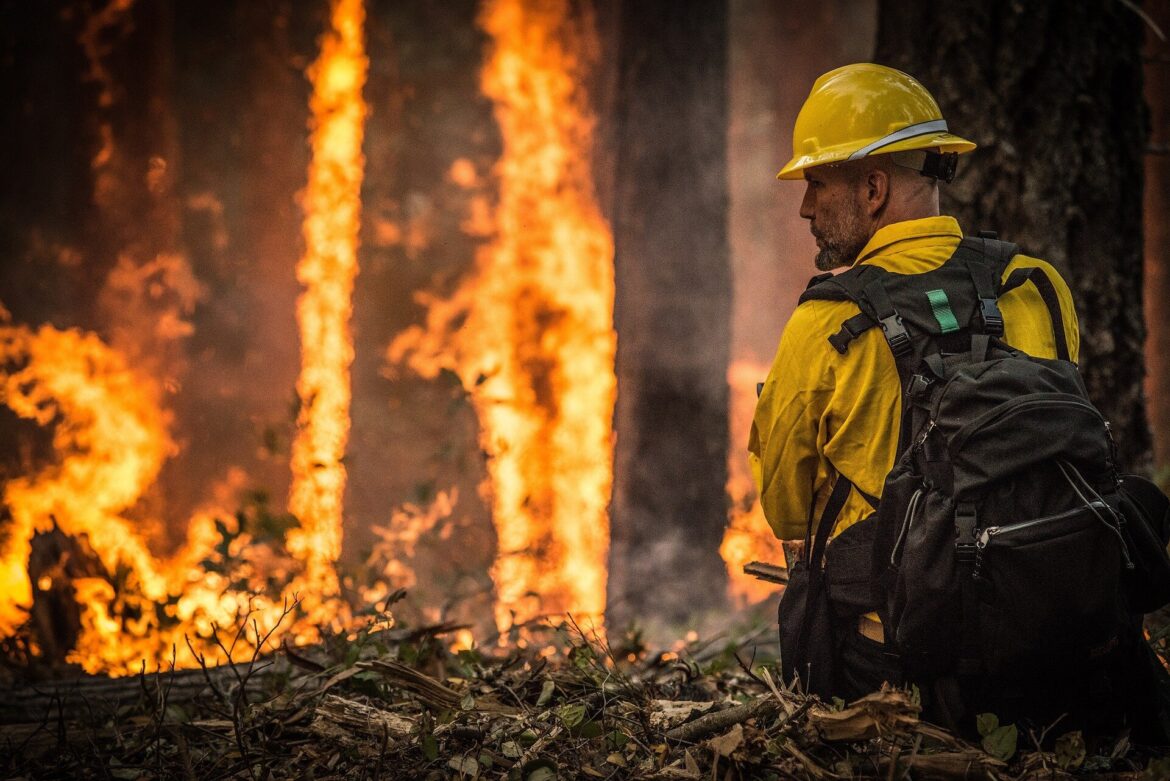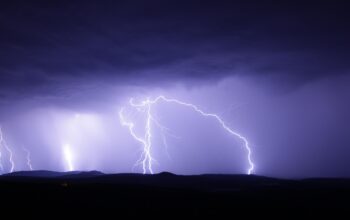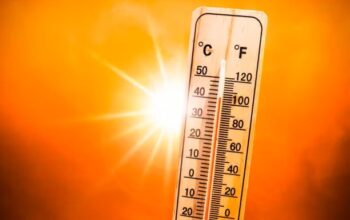The United Kingdom is facing one of its most extreme climate emergencies in recent memory. A historic heatwave across the nation has triggered more than 649 wildfires in the first half of 2025, forcing firefighters to battle flames across England, Scotland, and Wales. The unusually dry spring—the driest in 50 years—combined with soaring temperatures above 33 °C, has led to widespread water use restrictions, including hosepipe bans, across multiple counties. As policymakers scramble to respond, experts warn that the UK’s climate profile is changing dramatically—and permanently.
This article offers a comprehensive look into what’s happening, why it’s significant, and what residents and policymakers can do to mitigate the risks going forward.
The 2025 Heatwave and Wildfire Crisis: Summary
In 2025, the UK is seeing unprecedented wildfire activity due to extreme temperatures and prolonged dry spells. The number of wildfires has more than doubled compared to the same period in 2022. Firefighters report battling blazes across open moorlands, residential fields, hedgerows, and even coastal cliffs. Meanwhile, hosepipe bans have been announced in at least 11 regions, with the potential to spread nationwide. The impact extends beyond inconvenience—biodiversity is threatened, air quality is deteriorating, and the national emergency services are stretched to their limits.
What Is a Heatwave?
A heatwave is defined in the UK by the Met Office as “an extended period of unusually high temperatures relative to the expected conditions of an area.” In England, a heatwave is officially declared when the daily maximum temperature meets or exceeds the heatwave temperature threshold for at least three consecutive days. In 2025, that threshold has been surpassed repeatedly, leading to extended red and amber weather warnings.
What Are Wildfires?
Wildfires are uncontrolled fires that burn in natural areas like forests, grasslands, or moors. Although more common in hot, dry climates like Southern Europe or Australia, the UK has seen a dramatic rise in wildfire incidents due to changing weather patterns. Unlike controlled burns or agricultural fires, wildfires can grow rapidly and threaten human settlements, critical infrastructure, and wildlife.
Where Are UK Wildfires Happening in 2025?
The fires have been most intense in the following areas:
- Saddleworth Moor (Greater Manchester): Fires spread over several miles of peat-rich land, with flames visible from the M62 motorway.
- Surrey and Kent: Woodland fires have destroyed residential hedgerows and forced temporary evacuations.
- Wales and Scotland: The Brecon Beacons and Scottish Highlands saw a combined total of over 80 fire outbreaks in June alone.
- Yorkshire Dales and Northumberland: Fires spread rapidly due to dry heather and wind conditions.
Why Is the UK Seeing More Wildfires?
Drier Springs and Summers
According to the Met Office, 2025’s spring was the driest since 1976, with rainfall down by 62%. Dry vegetation becomes perfect fuel for wildfires.
Higher Temperatures
The UK recorded temperatures of 33.1 °C in London and surrounding counties in late June. These highs are above the norm and persist for longer periods.
Human Activity
Disposable BBQs, campfires, and glass bottles are leading ignition causes. In many wildfire cases, human negligence is the root trigger.
Peatland Vulnerability
UK moorlands, especially in the north, have deep layers of peat which burn underground, making fires last longer and harder to control.
Hosepipe Bans Across the UK: What You Need to Know
Water companies in Thames Valley, Hampshire, Lancashire, and Kent have introduced strict hosepipe bans. Under the ban, residents are prohibited from using hoses for:
- Watering gardens or lawns
- Cleaning cars or patios
- Filling paddling pools or ponds
Violation of a hosepipe ban may result in fines up to £1,000. These bans are enacted to conserve dwindling water reserves in reservoirs and aquifers.
Real-Life Example: Yorkshire Farmer Loses Livestock to Wildfire
On June 24, 2025, farmer Lewis Carr from North Yorkshire reported losing over 30 sheep to a fire that engulfed part of his grazing land. Emergency services arrived too late to control the blaze, and strong wind carried embers nearly half a mile. “This was nothing like we’ve seen before. It jumped the hedge, raced across the field in seconds,” said Carr in an interview with BBC North.
What Authorities Are Doing
Fire and Rescue
Over 2,400 firefighters have been deployed nationwide, including mutual aid from Scotland to assist northern England. Helicopter water drops are in operation.
National Drought Group
The government has convened the National Drought Group, which includes DEFRA, the Environment Agency, and Ofwat, to coordinate national response strategies.
Ban on Open Fires
Several councils have temporarily banned open fires in public parks and forests. Violation of these bans may carry civil penalties.
How Residents Can Stay Safe
Monitor Local Warnings
Check the Met Office and Fire Weather Index daily for updates on fire risk in your region.
Avoid Ignition Risks
Do not light BBQs or campfires in parks, forests, or grasslands. Ensure cigarette butts are fully extinguished.
Stay Hydrated and Indoors
In high heat advisories, limit outdoor activities during the hottest parts of the day and drink plenty of fluids.
Environmental Impact
Wildlife Displacement
Wildfires have already disrupted nesting patterns for protected birds like skylarks and nightjars. Entire habitats are being scorched, leading to long-term ecosystem shifts.
Air Quality
PM2.5 pollution levels have tripled in London and Birmingham during wildfire activity, triggering respiratory warnings for vulnerable individuals.
Carbon Emissions
A single large peatland fire can release as much CO₂ as 30,000 cars in one year. Climate researchers worry this will reverse progress on UK emissions targets.
Trends in 2025: The New Normal?
UK meteorologists now believe wildfires may become seasonal rather than rare occurrences. This aligns with larger climate trends observed across Europe, where wildfire frequency has risen by 280% since 2010.
According to a University of Exeter climate model, the UK could face a wildfire season stretching from May to September by 2030 if current temperature trends continue.
Policy Outlook
The Labour-led UK government is considering:
- Expanding controlled burn permits to manage flammable underbrush
- Increasing funding for rural fire brigades
- Requiring firebreak zones near residential developments adjacent to wildlands
DEFRA is also exploring rewilding and agroforestry schemes to build climate resilience.
Frequently Asked Questions
How many wildfires have been recorded in the UK in 2025?
As of July 2025, over 649 wildfires have been confirmed—more than double the record set in 2022.
Are hosepipe bans legally enforceable?
Yes. Violating a hosepipe ban can lead to a fine of up to £1,000, depending on the region and local water authority.
Can I use a watering can during a hosepipe ban?
In most cases, yes. Watering cans and buckets are allowed, but using a hose or pressure washer is prohibited.
Are wildfires mostly caused by people?
Yes. Around 89% of UK wildfires in 2025 have been attributed to human causes like discarded cigarettes, BBQs, or arson.
Will the UK see more heatwaves in the future?
Yes. Climate scientists project an increase in both the frequency and severity of heatwaves in the UK, especially in southern and central England.
Final Thoughts
The UK’s 2025 wildfire and heatwave crisis is not just a one-off natural event. It marks a shift in how we must think about our environment, public safety, and even daily life routines. From hosepipe bans and disrupted ecosystems to overwhelmed emergency services and threatened farmland, the warning signs are impossible to ignore.
Climate adaptation is no longer optional—it’s essential. This means community awareness, responsible behavior, government action, and long-term ecological planning. Wildfire season in the UK may soon become as expected as it is in Southern Europe. The sooner we prepare, the better we can protect people, nature, and infrastructure from a fiery future.
If you’re interested in stories about how the UK faces crises, culture, and survival, check out this related feature:
Best British Movies to Stream on Amazon — Explore how British cinema captures resilience and storytelling in times of challenge.
Read it here
Resources & References
- The Times UK: Wildfires Britain 2025
- Met Office: Weather Warnings and Heatwaves
- [Environment Agency Fire Reports 2025]
- [University of Exeter Climate Modelling Report, May 2025]
- [BBC North: Yorkshire Farm Fire Coverage, June 2025]
Disclaimer
This article is intended for educational and informational purposes only. All data is drawn from public sources and verified at the time of publication. For urgent safety information, always consult official government or emergency service websites.



